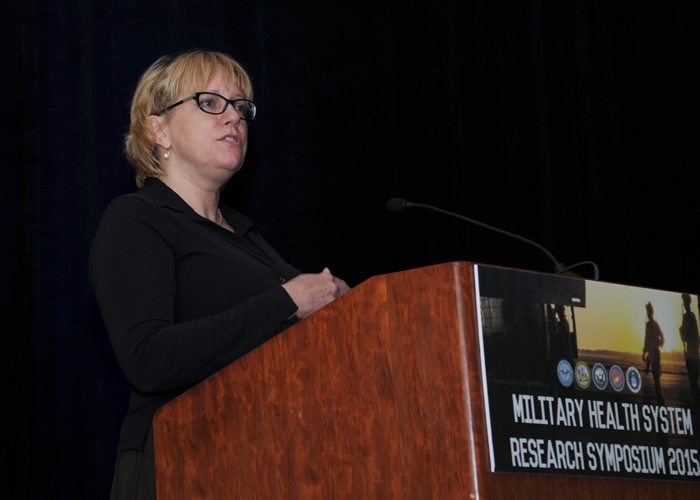Army Medicine Study Looks at Optimizing Combat Casualty Care

Experts from the U.S Army Institute of Surgical Research presented data at the Military Health System Research Symposium Aug. 19 to introduce a five-year study evaluating utilization of Role 2 forward surgical capabilities, trauma care on the battlefield and highlighting possible ways to optimize care for Wounded Warriors.
"The study that we are working on is to learn from our current and our past to plan for our future," said Lt. Col. Elizabeth Mann-Salinas, a nurse scientist at the U.S. Army Institute of Surgical Research who presented the project funded by the U.S. Army Medical Research and Materiel Command's Congressionally Directed Medical Research Programs.
To provide the best care of Wounded Warriors, the Army leverages five echelons of care, including:
- Role 1 - care provided at the point of injury
- Role 2 - life-saving interventions provided by a medical staff at a Forward Surgical Team
- Role 3 - care at a Combat Support Hospital
- Role 4 - care provided at hospitals, such as Landstuhl Regional Medical Center in Germany
- Role 5 - definitive care at a Military Treatment Center state-side, such as the Walter Reed National Military Medical Center in Bethesda, Maryland
"From our estimation, we have woefully overlooked the importance of evaluating how we are using the Forward Surgical Team [Role 2] capacity to inform how we are going to move forward to train for future contingencies," said Mann-Salinas. "This is particularly relevant given the emphasis on the expectation of the 'prolonged field care' in other military theaters of operation."
Mann-Salinas explained the study is to evaluate the historical utilization of Role 2 assets in recent conflicts to optimize pre-deployment readiness of combat casualty care providers.
"We want to look at how we've done it in the past. We want to do some sophisticated modeling predictive features to try to come up with better point of injury care. But my real passion is getting the person who is going to be delivering that care up to that standard of everybody else on their team and it doesn't matter what uniform - active or reserve status - that you come from. We all must be prepared to do the same job and deliver the best possible care to our Wounded Warriors on the battlefield," Mann-Salinas said.
The need for evaluating battlefield combat casualty care is recognized internationally, and as a result, the Role 2 project is a component of the formal US-UK partnership. In 2011, President Barak Obama and Prime Minister David Cameron created the "US-UK Service Personnel, Families, and Veterans Task Force," comprised of five working groups covering issues from transition to civilian life, mental health, rehabilitation, family support, and medical interoperability. Additionally a formal Cooperative Research Agreement was established with the Israeli Defense Force to compare our experiences in modern combat casualty care. The preliminary results of this comparison were presented at this year's conference.
"I believe that if we understand how we've used Role 2 in the past that it will help us in be better trained in the future for providing combat casualty care," added Mann-Salinas.
MHSRS combined three previous conferences, including the former Advanced Technology Applications for Combat Casualty Care Conference; the Air Force Medical Service Medical Research Symposium; and the Navy Medicine Research Conference. By combining these conferences into one event, the meeting serves as a critical strategy session for leaders to set future milestones for the Department of Defense's deployment-related medical research programs, centered on the needs of the Warfighter.














